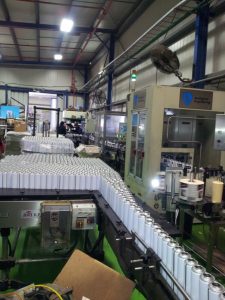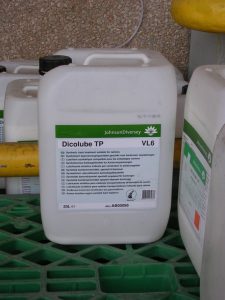Case Study – Conveyor Belt Lubrication
MixRite Dosing Pump and Nozzles


 Tefen Solution
The customer chose the MixRite dosing pump for precisely and continuously inject a ratio of water with 0.5% of the lubrication agent. The MixRite ensure a precise ratio of lubrication and water, regardless of the water flow pressure, and our fine nozzle sets consistently spray whenever the conveyer belt is operated.
Tefen Solution
The customer chose the MixRite dosing pump for precisely and continuously inject a ratio of water with 0.5% of the lubrication agent. The MixRite ensure a precise ratio of lubrication and water, regardless of the water flow pressure, and our fine nozzle sets consistently spray whenever the conveyer belt is operated.



Product: MixRite 2.5 internal Bypass for adding liquid food additives.
Challenge: Industrial filling lines (for bottles, cans, containers, etc.) must operate with the utmost efficiency and safety. To do so, a thin and consistent layer of a dedicated lubrication is sprayed onto the conveyor belt, ensuring a stable grip of the cans or bottles. Both insufficient and surplus quantities of lubricant, however, could lead to pileups, inefficiency, waste, and hazards. This lubrication also prolongs the conveyor belt’s life cycle.

 Tefen Solution
The customer chose the MixRite dosing pump for precisely and continuously inject a ratio of water with 0.5% of the lubrication agent. The MixRite ensure a precise ratio of lubrication and water, regardless of the water flow pressure, and our fine nozzle sets consistently spray whenever the conveyer belt is operated.
Tefen Solution
The customer chose the MixRite dosing pump for precisely and continuously inject a ratio of water with 0.5% of the lubrication agent. The MixRite ensure a precise ratio of lubrication and water, regardless of the water flow pressure, and our fine nozzle sets consistently spray whenever the conveyer belt is operated.

